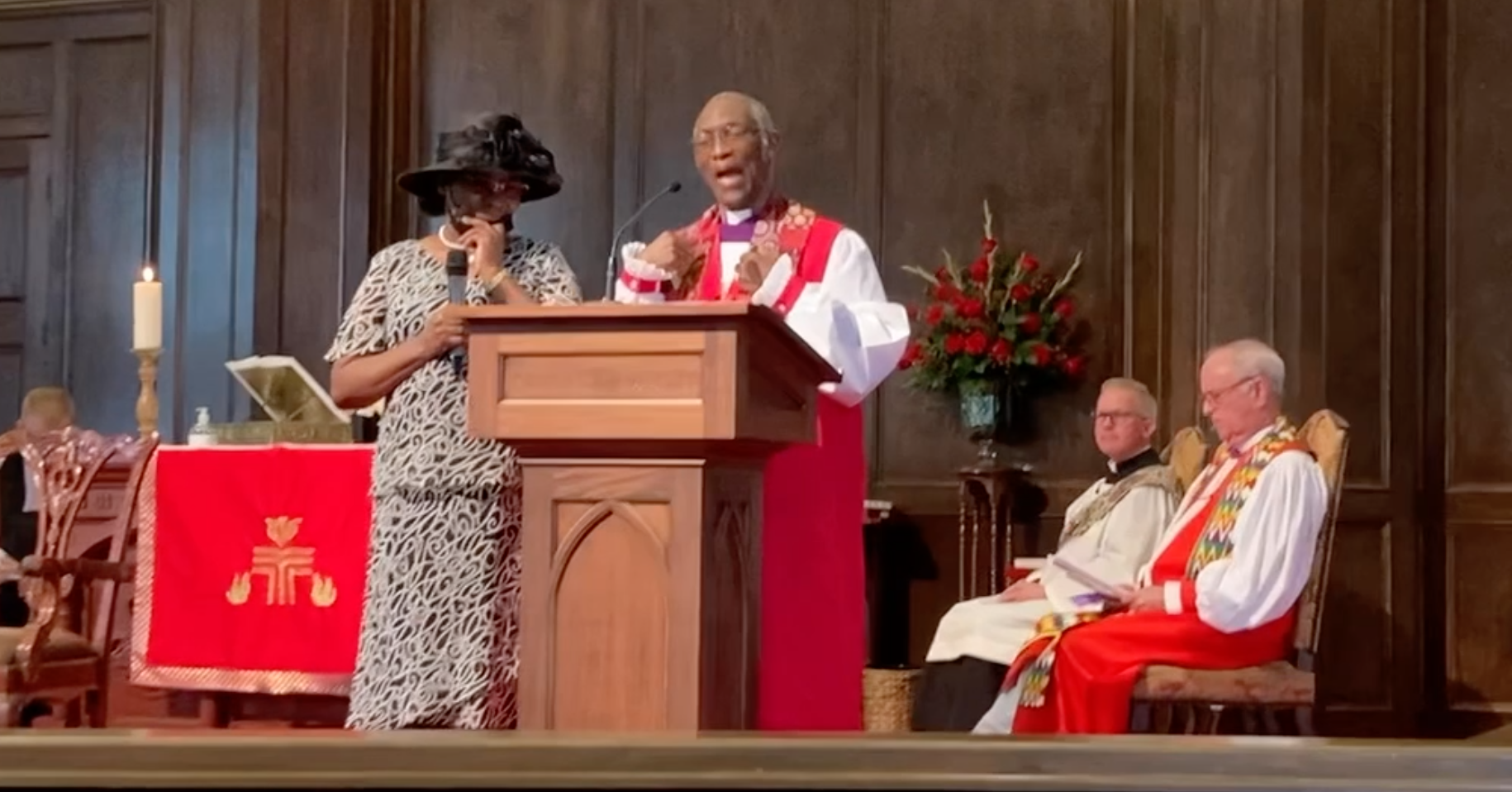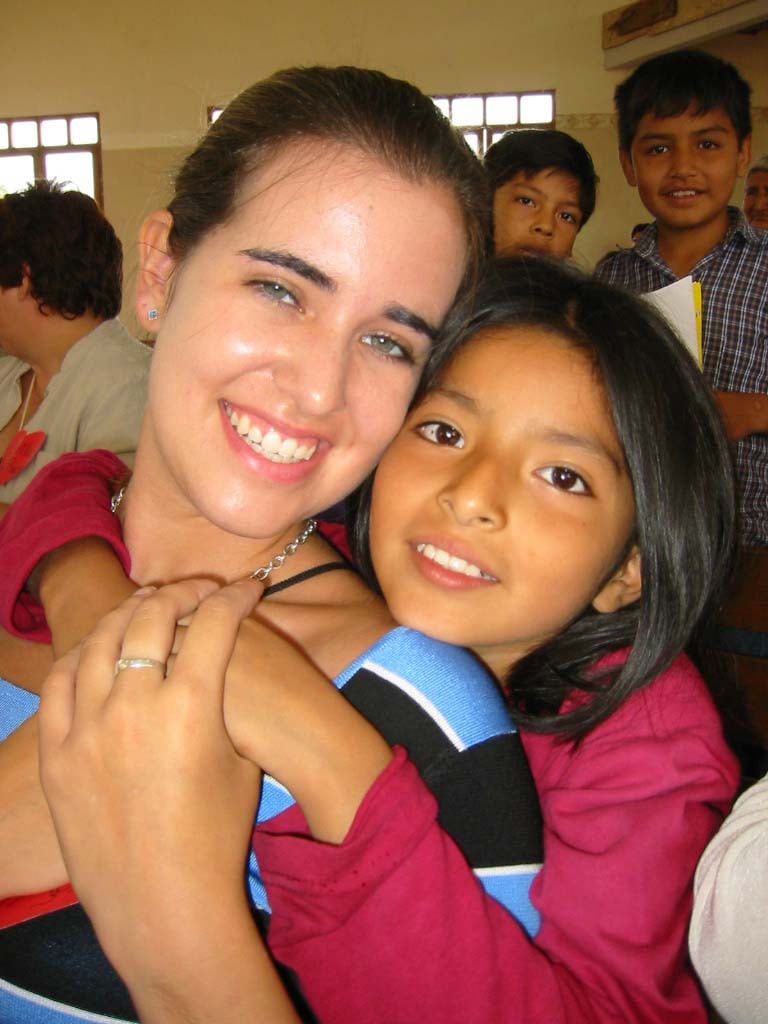The Greatest Story Ever
Advent draws us closer and closer into the greatest story ever. It’s a story told and retold in thousands of ways, for literally thousands of years. And with all the ways of telling the tale, it’s critical we get it right.

Bishop Ivan Sikha has built a large ministry in India, and elsewhere, using storytelling. He uses 20 plus stories from the Bible. When he trains his storytellers in telling the stories, he shares them orally and then asks the listeners to repeat them. When they add or delete part of the story, Ivan has them do it again, and again, until it is correct. Thousands have come to know Jesus Christ through these stories. And his ministry in India continues to flourish.
Here’s a picture from +Ivan’s recent clergy retreat.

When the story is told, sometimes it reaches out and takes hold of a heart and changes a persons’ life forever. That is God’s part in the work of sharing the story. And so it becomes the greatest story ever.

The Story Part I. God & His People
“If we are going to live appropriately, we must be aware that we are living in the middle of a story that was begun by and will be completed by another. And this other is God,” wrote Eugene Peterson in Run with the Horses.
The Bible is the story of God and his people, and there’s an agreement about the relationship which is stated in numerous places via a covenant, which when summed up is, “I will be God and you will be my people.”
From the very start, we got it backward. As someone said, “God made us in his image and we repaid the compliment.”
Our default self-understanding is that we are God, and he is there to help us when needed.
Just one time he said “don’t,” to just this one thing, and we said, “I will too! I can do what I want, right?” Wrong!

Lest we forget, he explained his reason for telling us not to eat from the tree: “In that day you will die.” Turns out he meant it, and so we did die, separated from life, so sin and death reigned and ruled, but, God promises to fix it in Genesis 3.15 - and thank (God) Him, he means this too.
“And I will put enmity between you and the woman, and between your offspring and hers; he will crush your head, and you will strike his heel.”
And he does what he said he would, finally, completely, and ultimately, in His Son, Jesus! And that is the focal point, the still point of the tale, but not the end.
That’s the story we are part of; we carry on the ministry of Jesus! That’s why we exist, to carry on the ministry of Jesus - “in him was life”.
And so we have a part to play in the story.
Dallas Willard puts it so well in his book, Knowing Christ Today:
You don't want to miss out on being a part–your part–of that great project. You want to be sure to take your life into his life, and in that way to find your life to be “eternal,” as God intended it. There is a real danger that you will miss out on this involvement with eternity and thereby miss the entire point of your existence. Eternity is now in process. Silently it moves along. But it will not run over you. You have to really want it–deep down–or you will miss it. That is why Jesus said to seek it more than anything else.
The Story Part II. Jesus
Jesus was a storyteller. He told God’s story, perfectly, with his lips, in his life, and through parables:
With his lips he commanded, “Arise!” and “Be still,” and “Come out!”
How did he do it?
“…how God anointed Jesus of Nazareth with the Holy Spirit and power, and how he went around doing good and healing all who were under the power of the devil, because God was with him.” Acts 10.38
Jesus also told God's story through his life. All of his life he was living the story of his Father and the Spirit - “I do only what I see the Father do …” and “I say only what I hear the Father say...”
Think of his compassion for the widow in Nain in Luke. To her only son, now dead, he says, “Young man, I say to you get up.” Scholars point out that Jesus' focus at this point was on the widow and her grief, no one else.
He told God's story in parables, John Shea says when people heard these stories they were confronted with 3 choices:
a. It’s not about me;
b. It is about me, but no thank you;
c. It is about me and, “Here am I, send me.”
Want to be part? To play your part? Jesus extends the invitation! The New Testament opens with Jesus saying, “Come, follow me, abide with me, come.” And it closes - “The Spirit and the bride say, 'Come!' And let the one who hears say, 'Come!' Let the one who is thirsty come; and let the one who wishes take the free gift of the water of life” (Rev 22.17).
How will we respond to his invitation? Eternity hangs in the balance.

The Story Part III. Paul
Paul, too, was a storyteller.

In Romans chapters 1-11 Paul has been telling the story of God and his people.
- In 1.15 - 3.20 = the rebellion of humanity against its creator;
- In 3.21-31 = a preview of God’s redemption in Christ;
- In 4.1-22 = how to appropriate it is shown in Abraham’s trust;
- In 4.23 = the story returns to the present;
- In 5 Paul tells how Christ reversed the direction given humanity by Adam;
- In 6 he tells us how Christ’s death for our redemption could be appropriated so the power of sin could be broken;
- In 7 - how that freed humans from a past dominated by sin and law;
- In 8 - how it opened us to a present dominated by God’s Spirit;
- In 9 Paul points to the future from the past and shows how God’s plan of gracious election had been at work from the beginning;
- In 10 how Christ brought the law’s grip to an end incorporating it in himself;
- And in 11 we see the future return of Israel to God’s chosen people in the culminating act of God’s gracious restoration of his lordship over the rebellious creatures.
(Paul J. Achtemeier, Interpretation Romans p.193)
Then there is the “Therefore” that opens chapter 12. And Paul begins to show us the motivation for Christian living.
So what is the motivation for Christian living?
The First Motivation: The word “Therefore.” We give ourselves to God because of all Paul has been explaining in chapters 1-11:
- we are justified by grace alone,
- through faith alone, and
- because of Christ alone.
The Second Motivation: The phrase “in view of God’s mercy” says the same thing. In short, the only sufficient motivation for Christian living, for being “living sacrifices” is gratitude for grace.”(Bishop Burnet from Haiti spoke on this at Christ Anglican Church in Mobile, AL 10/25/21)
So we have the "therefore" (because of all of this and in view of God’s mercy), Paul is going to tell us how do we live in this grace in God’s story by not being conformed to the world but by the transformation of our minds.
A Bit of the Story of Transformation
Here’s a bit of a story, about not being conformed but transformed, that rearranged my whole being in a most wonderful way.
Barbara and I planned an Alaskan cruise for our 25th wedding anniversary (our first cruise ever, I should add). Sheryl had planned a week-plus mission trip to Ecuador, which turned out to be right before the cruise (it was also my first mission trip, and my kids Peter, AJ, and Whitney went as well). I had no idea just how these two events would shape my soul that summer.

The place we went to in Ecuador didn’t even have a name on a map. Most of the villagers lived in one-room huts stilted up about ten feet from the ground. We slept on slabs of concrete that had been poured for classrooms and were guarded at night by men with rifles and shotguns. Our job was to mix and pour the slab for the church. They had made toilets, of a sort, for us, for which we were all truly thankful, eventually.
The worship in the evenings was wholehearted and then some. I would lose my breath (check out Daniel 10.17) and cry most nights. But on with the story.
One day our daughter Whitney came over to me and held out a toy. She had tears in her eyes. A girl had given her a toy, but you see, it was the girl's only toy! In an instant, Whitney knew how much she had in comparison, and she had met gracious generosity in person. We were all being changed.

So the first day on the cruise, Barbara and I were in the buffet line which was being held up by a woman saying very loudly, “Gimme more!” and she kept repeating that (although her plate was more than full of the smoked salmon she was demanding). The contrast was sickening but soul-shaping...transformative.
It is to not be conformed and shaped by the world and its values which are basically get, get, and get more. It is to be conformed to the Kingdom’s which are give, give and give it all for Him, and thus become living sacrifices, transformed, changed from one degree of glory to another.
And so, Paul’s words about not being conformed to this world but being transformed sunk in, and to this day helps me walk in the dust of my Rabbi King!
The Story Part IV. The Four Gospel Writers
The story of God and his people is perhaps told most clearly in the 4 gospels. Stories have a beginning and an end, and it’s interesting to look at what the beginning and end of the gospels might tell us about the story.
Matthew
Begins with Emmanuel (aka “God with us") and closes with, “Go, go into all the world” and then “I am with you always.”
- We see the promise of His presence,
- We hear the imperative to go, to be about mission, and that
- We are here with a purpose, and as Dallas Willard noted, we can, but don’t want to, miss it! Think about what Paul said in Ephesians, “For we are God’s handiwork, created in Christ Jesus to do good works, which God prepared in advance for us to do.”
Mark
As Matthew is about the presence, mission, and going, Mark is about the presence, ministry, and doing.
He begins with Jesus’ baptism and then immediately there’s ministry like deliverance and healing.

He closes with these words, “And these signs will accompany those who believe: In my name, they will drive out demons; they will speak in new tongues; they will pick up snakes with their hands; and when they drink deadly poison, it will not hurt them at all; they will place their hands on sick people, and they will get well.”
Make note, that's our job description as followers!
He continues, “After the Lord Jesus had spoken to them, he was taken up into heaven and he sat at the right hand of God. Then the disciples went out and preached everywhere, and the Lord worked with them and confirmed his word by the signs that accompanied it.”
Again, we find the Presence of God. Part of the good news is still the promise of the presence. He will be with us in going on mission and in doing HIs ministry.
That’s what we are here to do, his ministry.
The work of the church? To tell God’s story!
“My grandfather was paralyzed. Once he was asked to tell a story about his teacher and told how the Holy Baal Shem Tov used to jump and dance when he was praying. My grandfather stood up while he was telling the story and the story carried him away so much that he had to jump and dance to show how the master had done it. From that moment, he was healed. This is how stories ought to be told.” M.Buber
Luke
Luke begins his gospel in the temple … the family, the baby, and the prophet Simeon.
He closes in the temple as well: “Then they worshiped him and returned to Jerusalem with great joy. And they stayed continually at the temple, praising God.”
We “lift up our hearts” in worship. And God pours His love into our hearts by His Spirit.

Worship is where we can become intimate with our Lord - the Greek word for worship means, “to kiss towards.” Both fellowship and worship are critical to our souls' health.
John
John's gospel begins: “In the beginning was the Word … and the Word became flesh…”
He closes by saying there were “too many words” to write down. In one sense, that means us. We are the enacted word/words:
- We are sent as he was sent… “as the Father sent me, so I send you…”
- We become the storytellers, extending the invitation
- What’s more, we become the story, with our lips and lives, words and works
- We extend the incarnation - and the invitation to the incarnation.
And so the story is told in thousands of ways. How can we get it right? Only one way: “Not I who live but Christ in me” Gal 2.20
The Story Part V. Us
As followers of Jesus we are called, to know, to be part of the story, to share this story, and to invite others to come and be part. I believe this is what defines us as Christians, are we part of the greatest story ever? We are when we tell it with our lips, our lives, and extend his gracious invitation to all we meet.

Epilogue
When I heard Canon Christopher preaching on Revelation 12, he said something like “this is not a story but is the story.” At that moment, it became clear to me, like my eyes were literally opened anew, that the story doesn’t end with this life for those who are part of the story, but it continues in an almost unimaginable way into our life to come.
Perhaps it was the way Christopher described the scene in Revelation 12: the colors and the woman and the dragon. It came alive like a Marvel movie for me. (I had watched my first on the flight to Phoenix that week.) That again makes this the best story ever!
This story will continue to be told in thousands of ways for thousands of years, and eternity to come.
What part of the story grabs you? or makes you wonder? Tell me in the comments below.
You May Also Like:
- Want to Hear? Draw Near
- Listening Together to the Best-Selling, Least-Read Book of Our Time
- Our Safe Arrival
